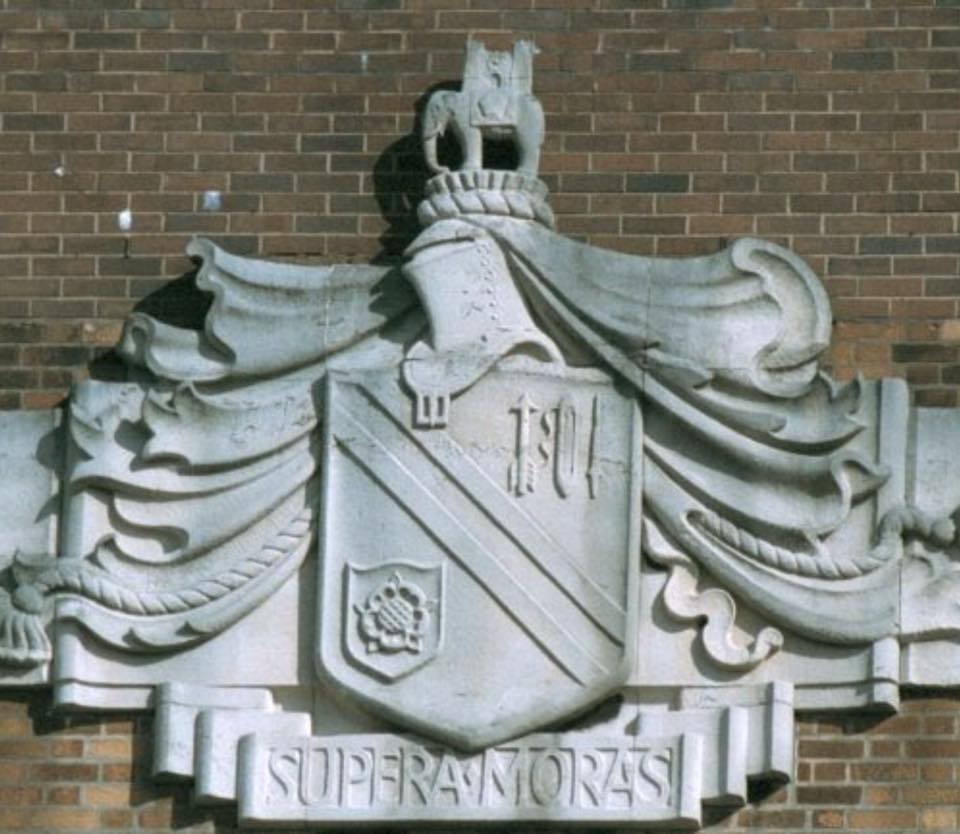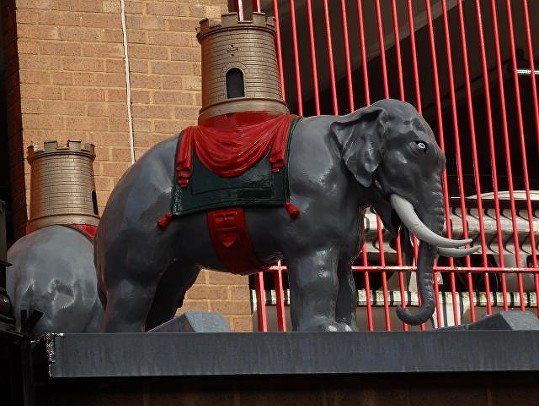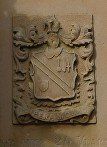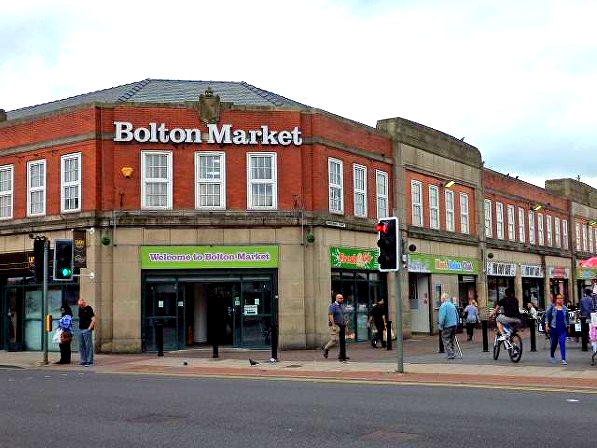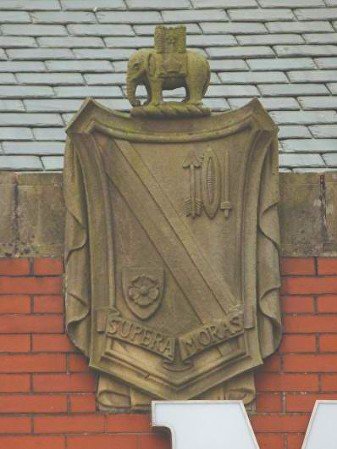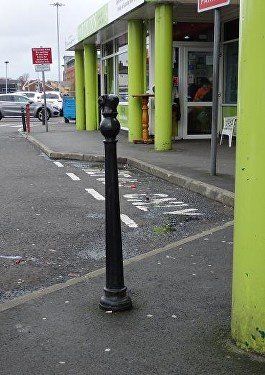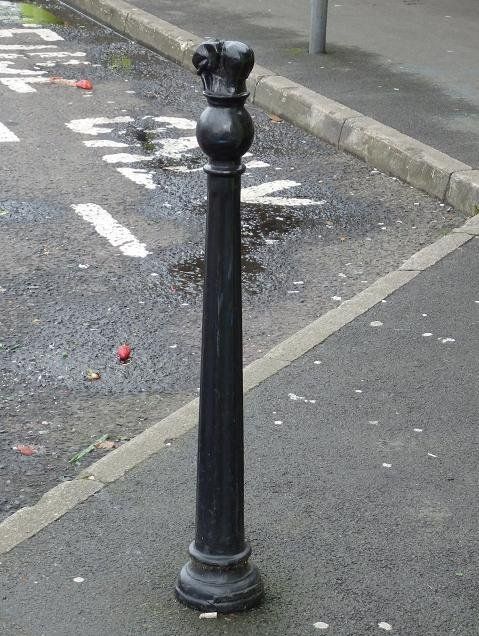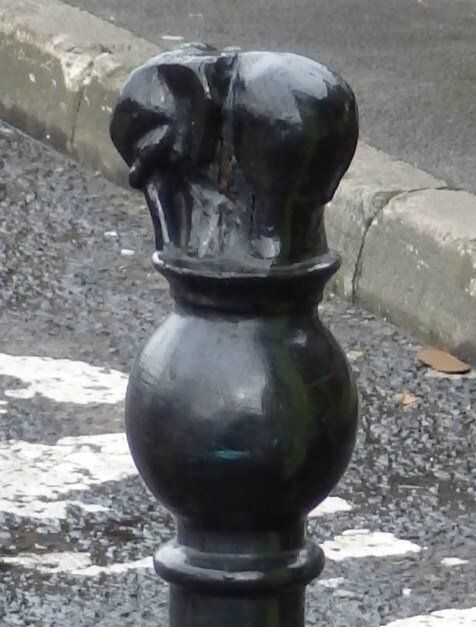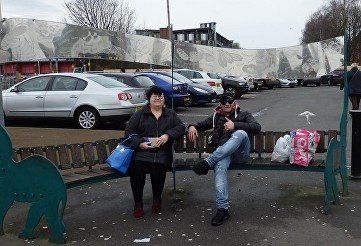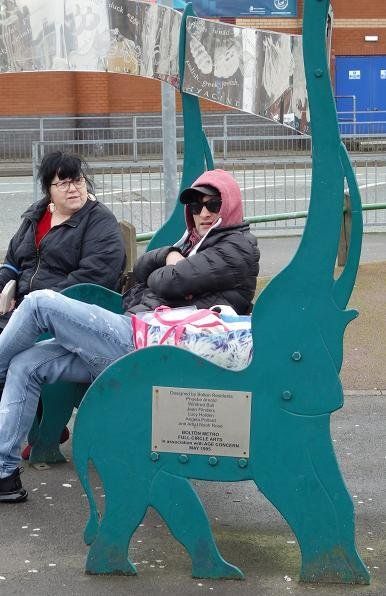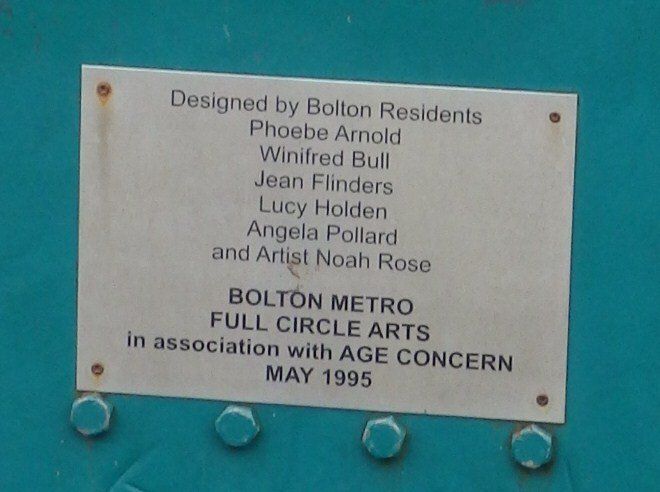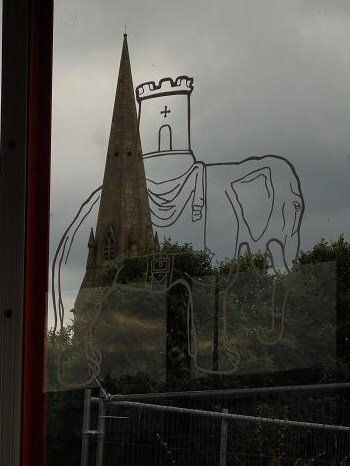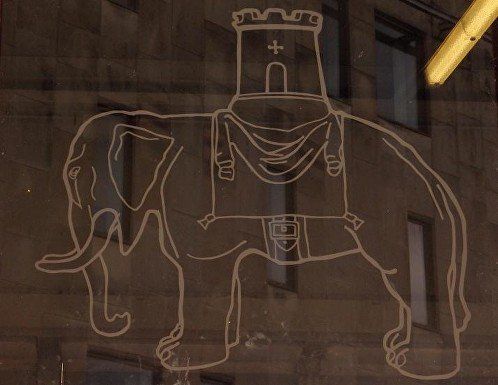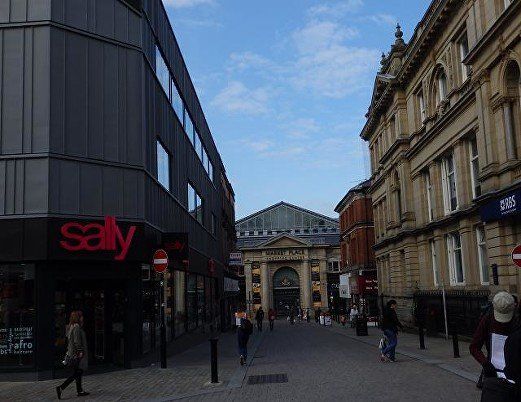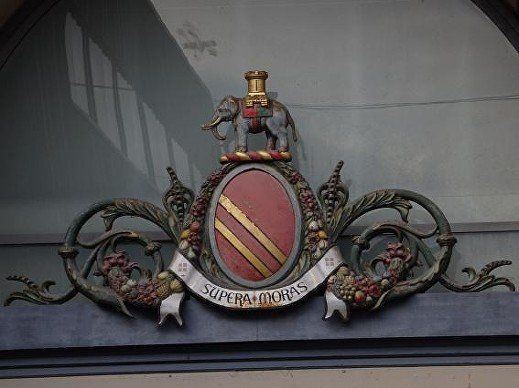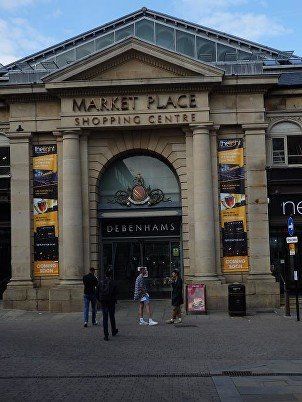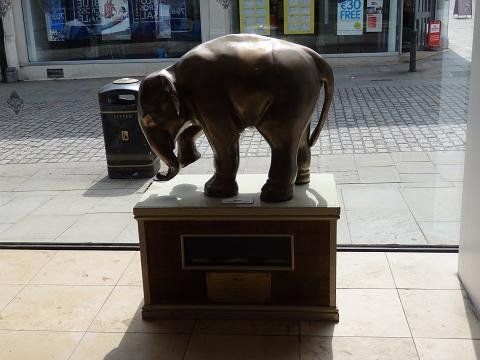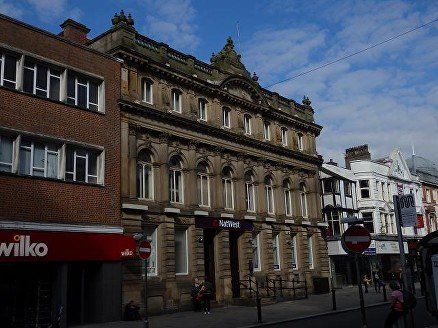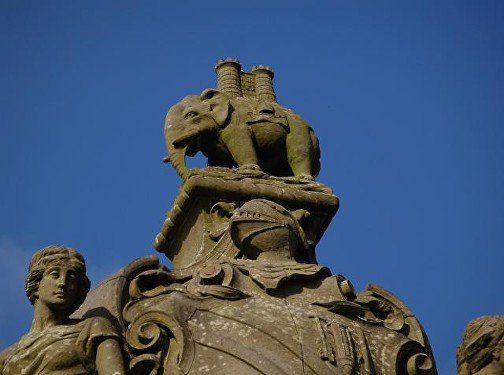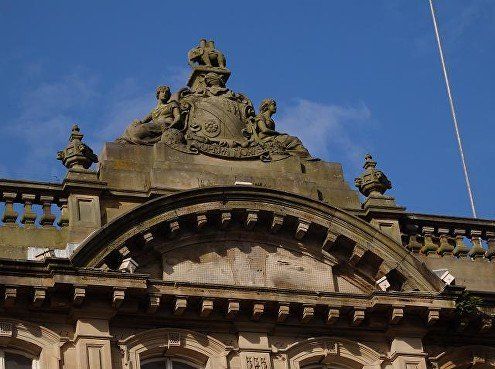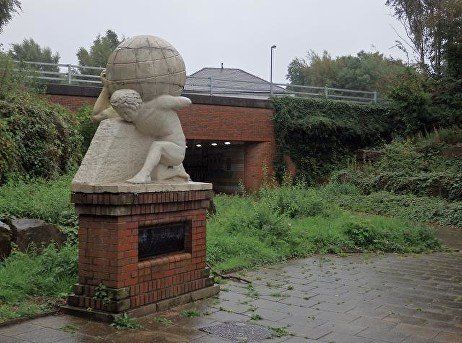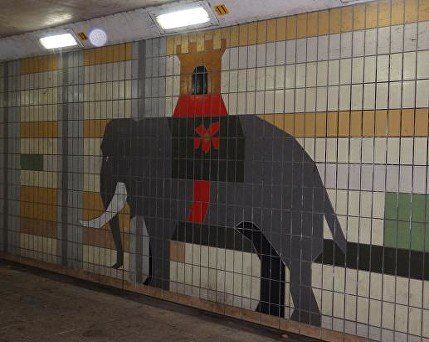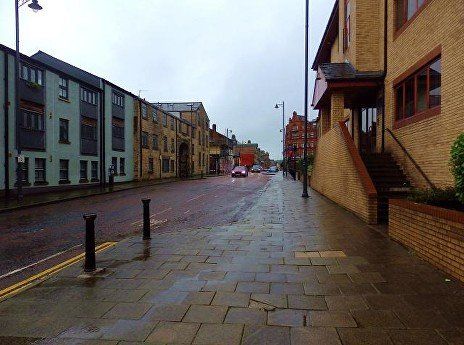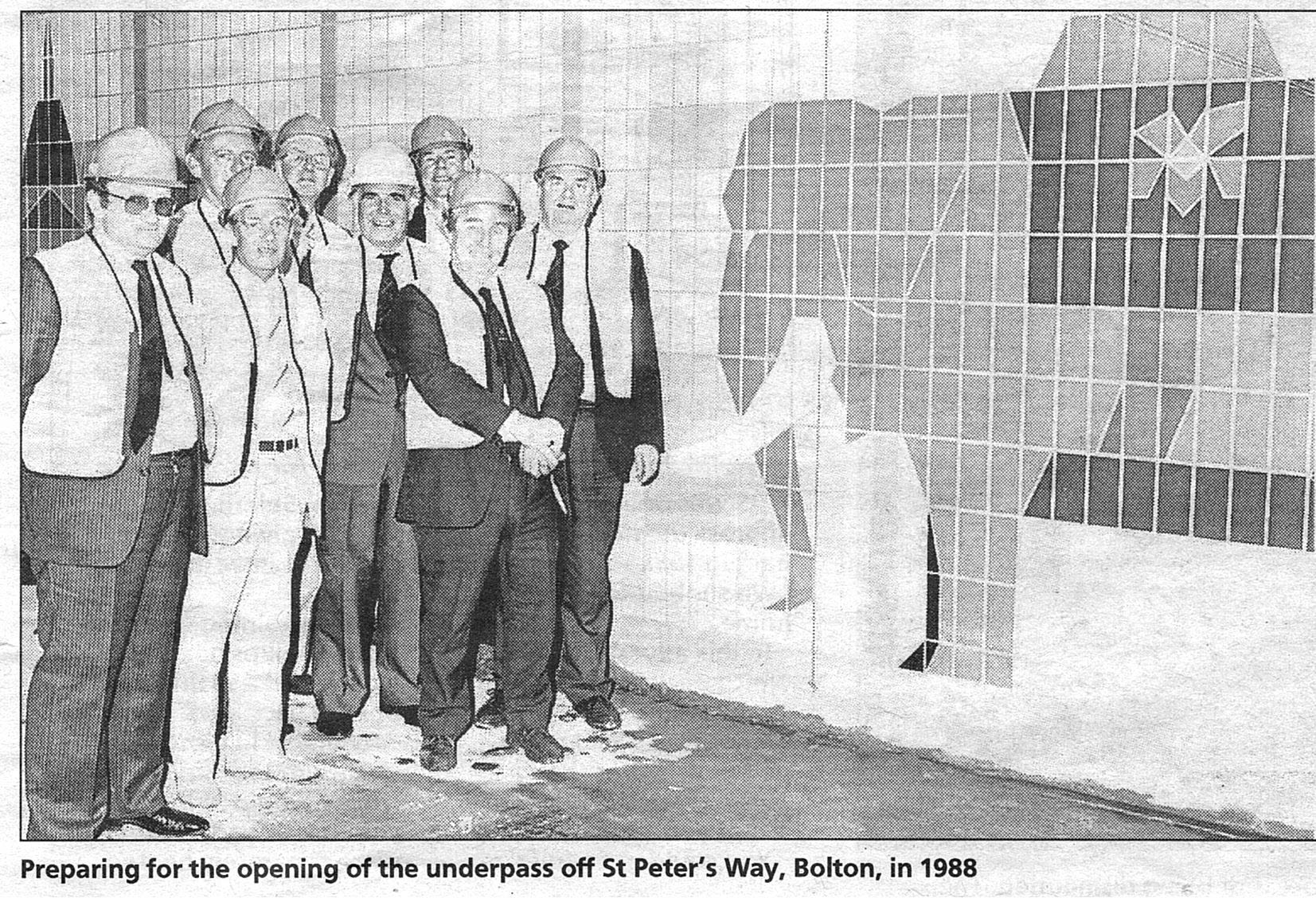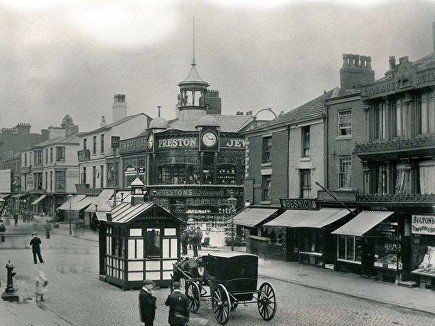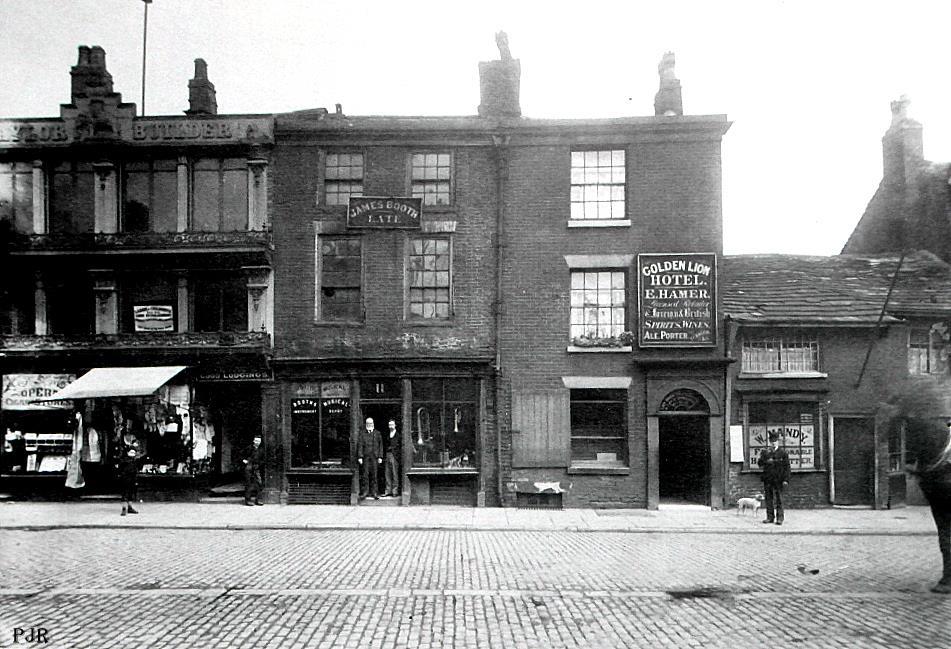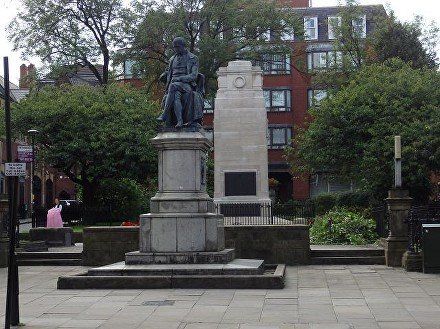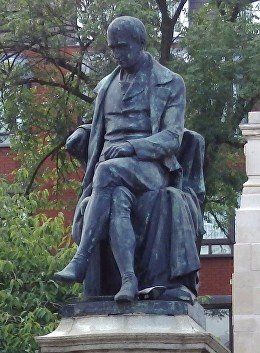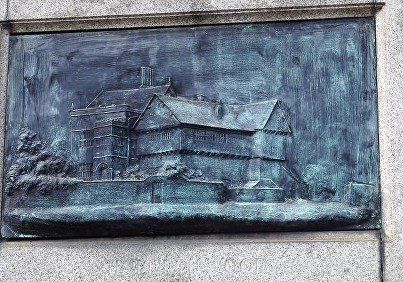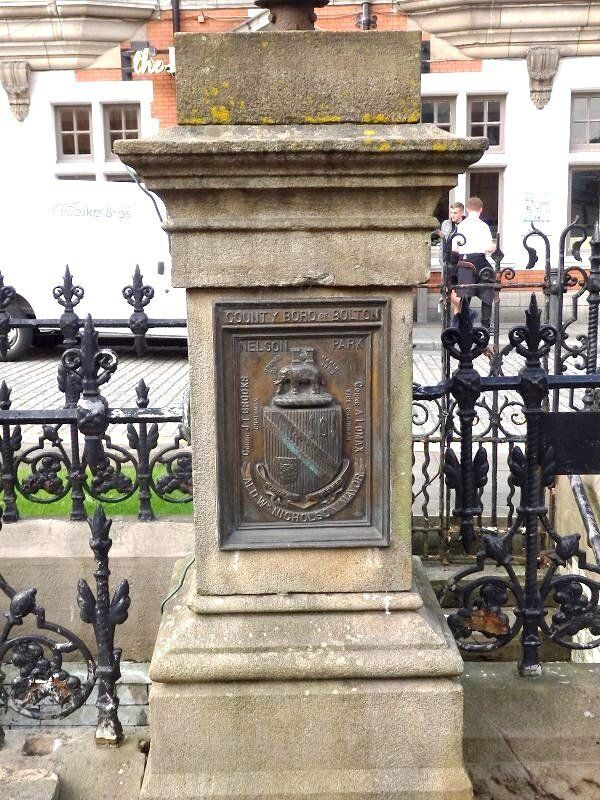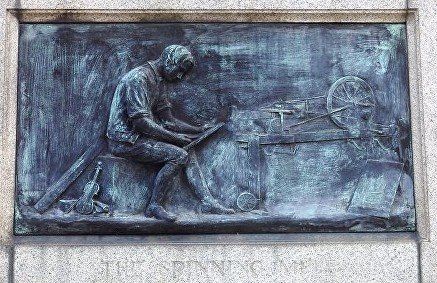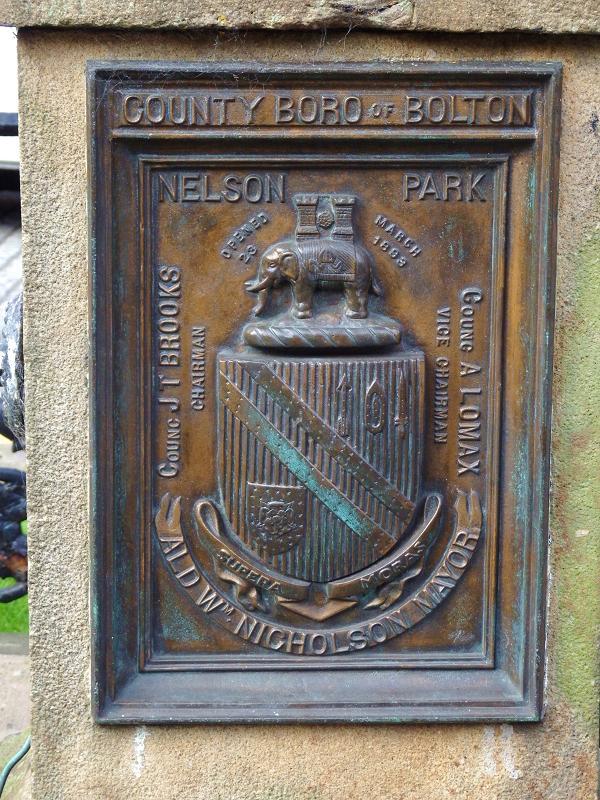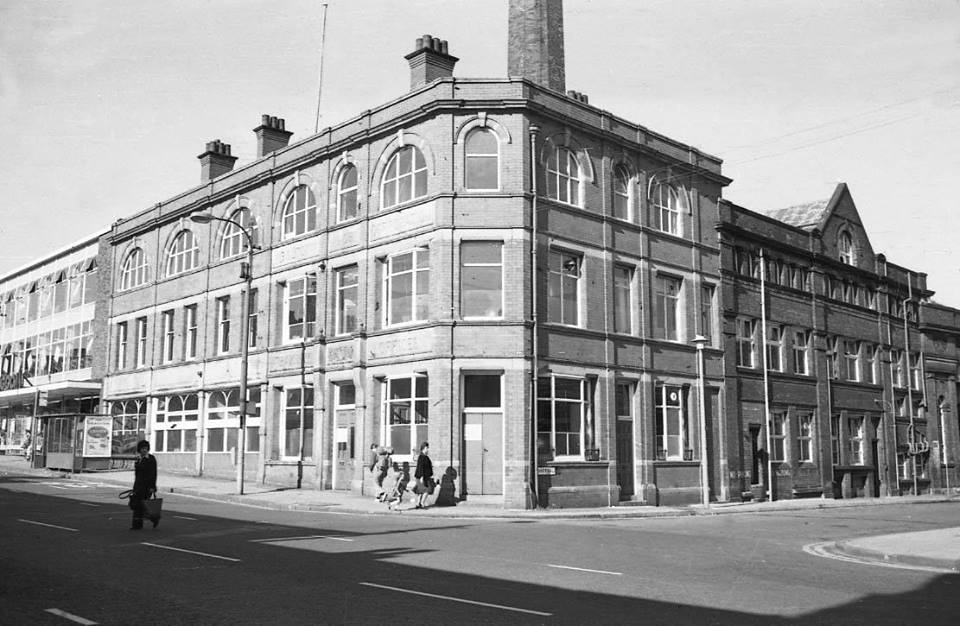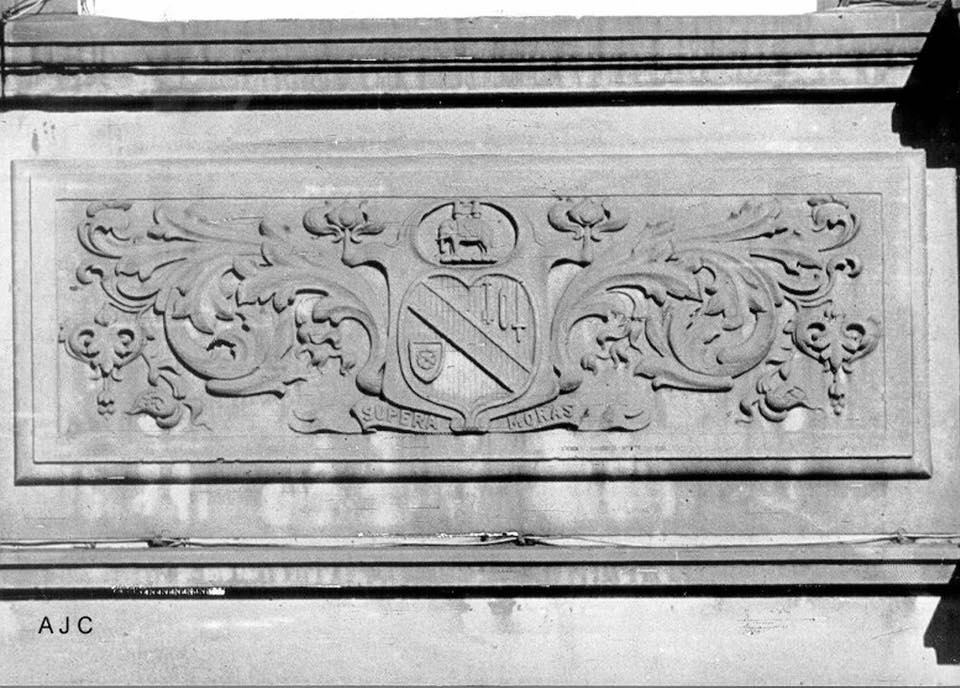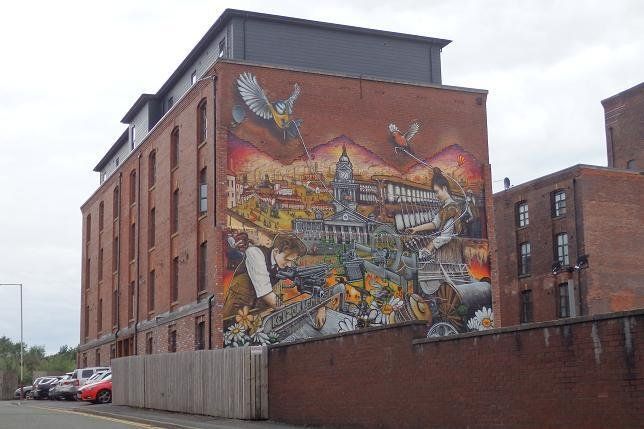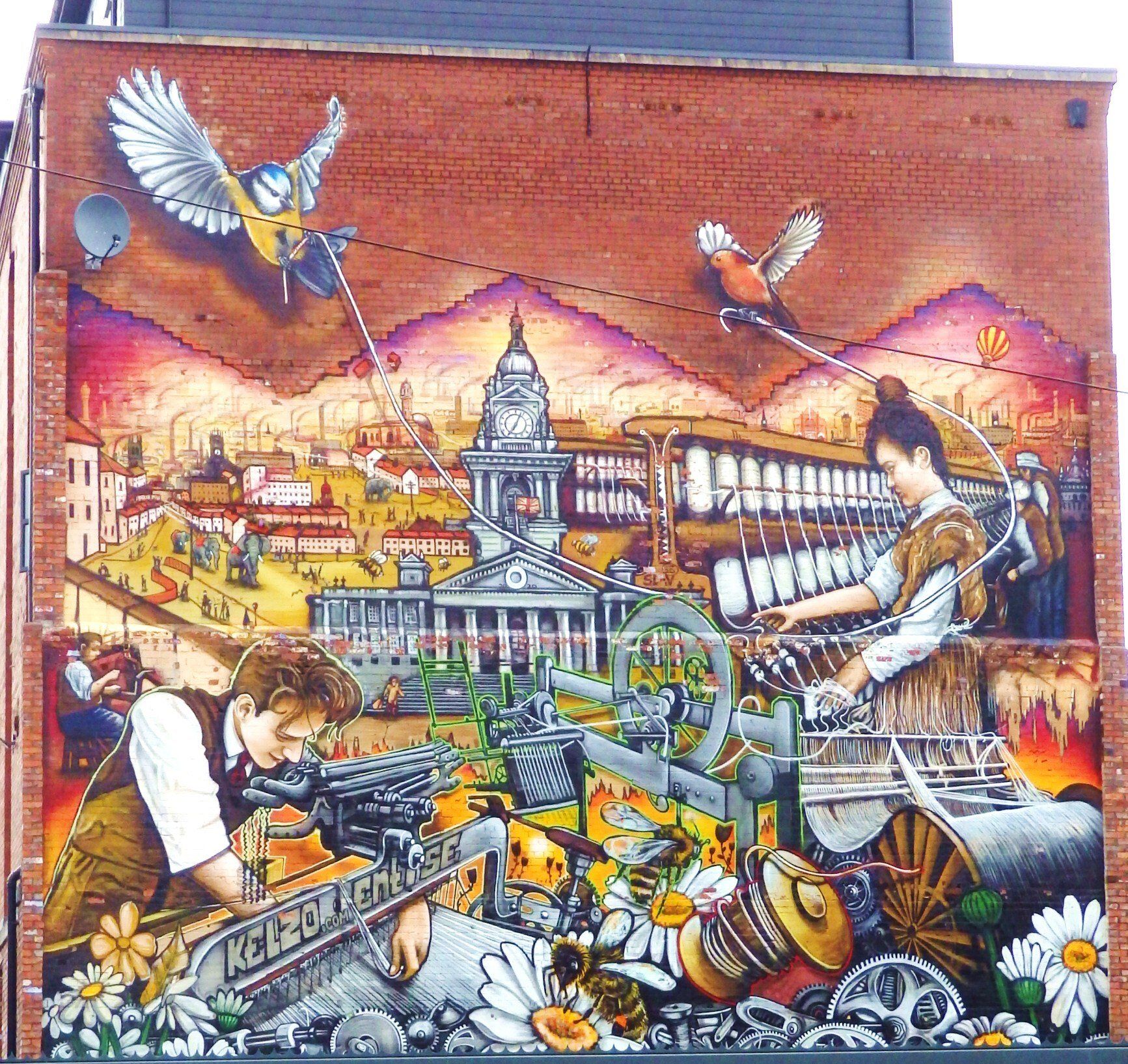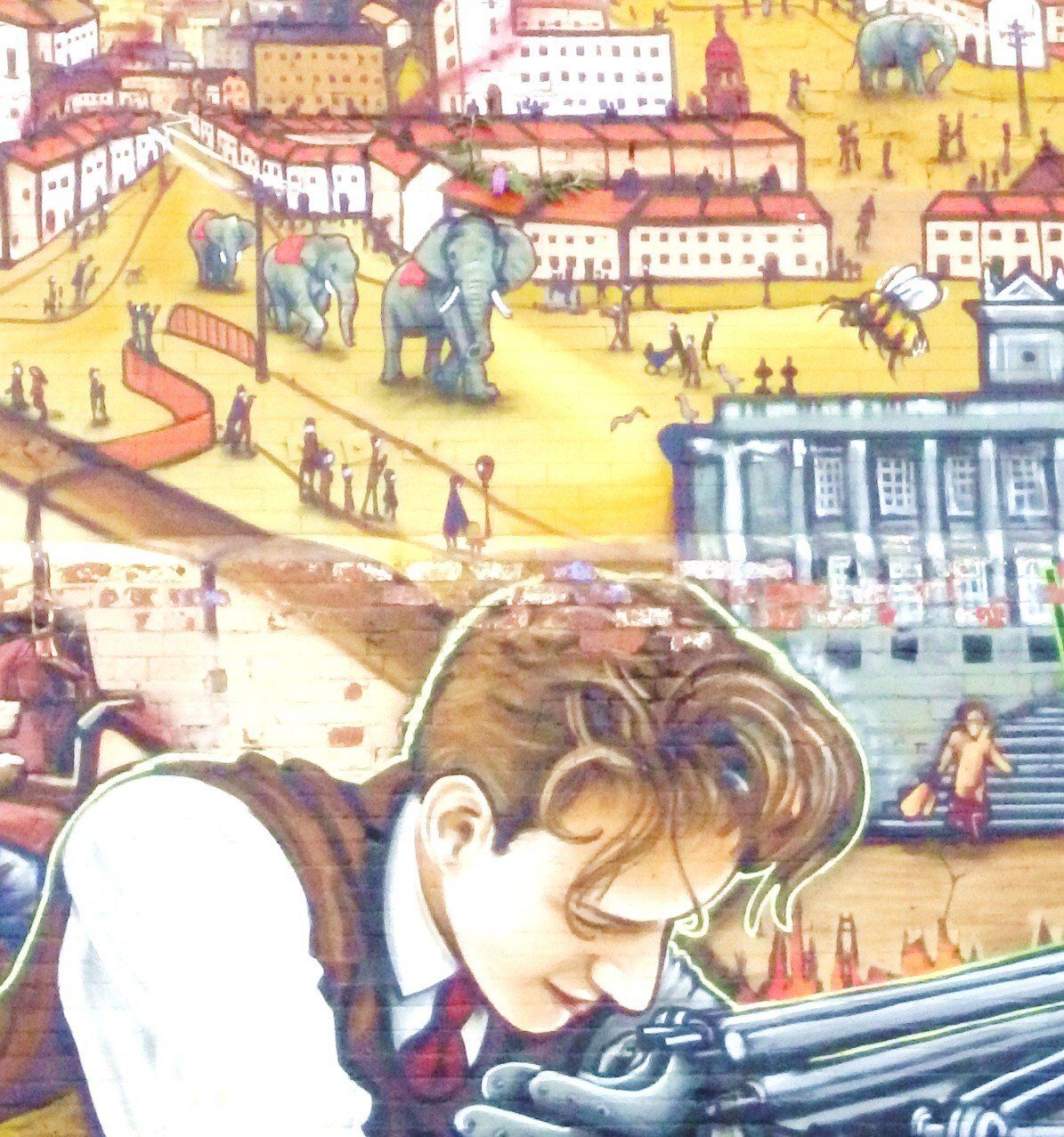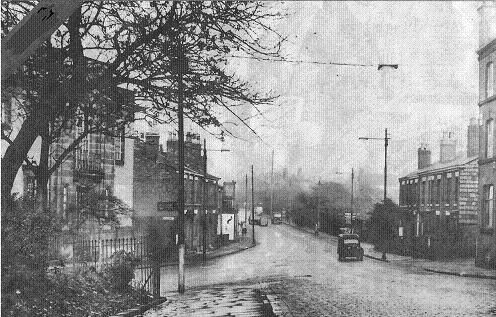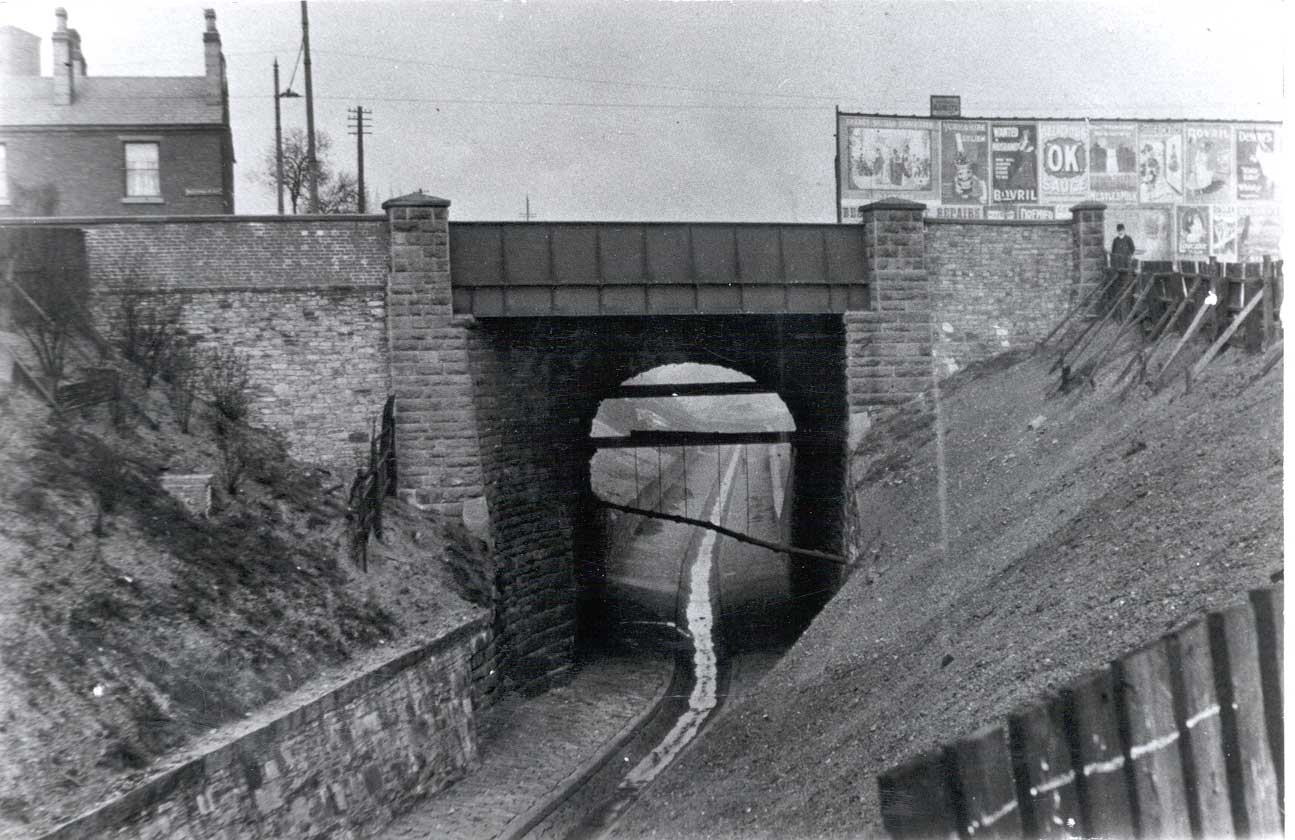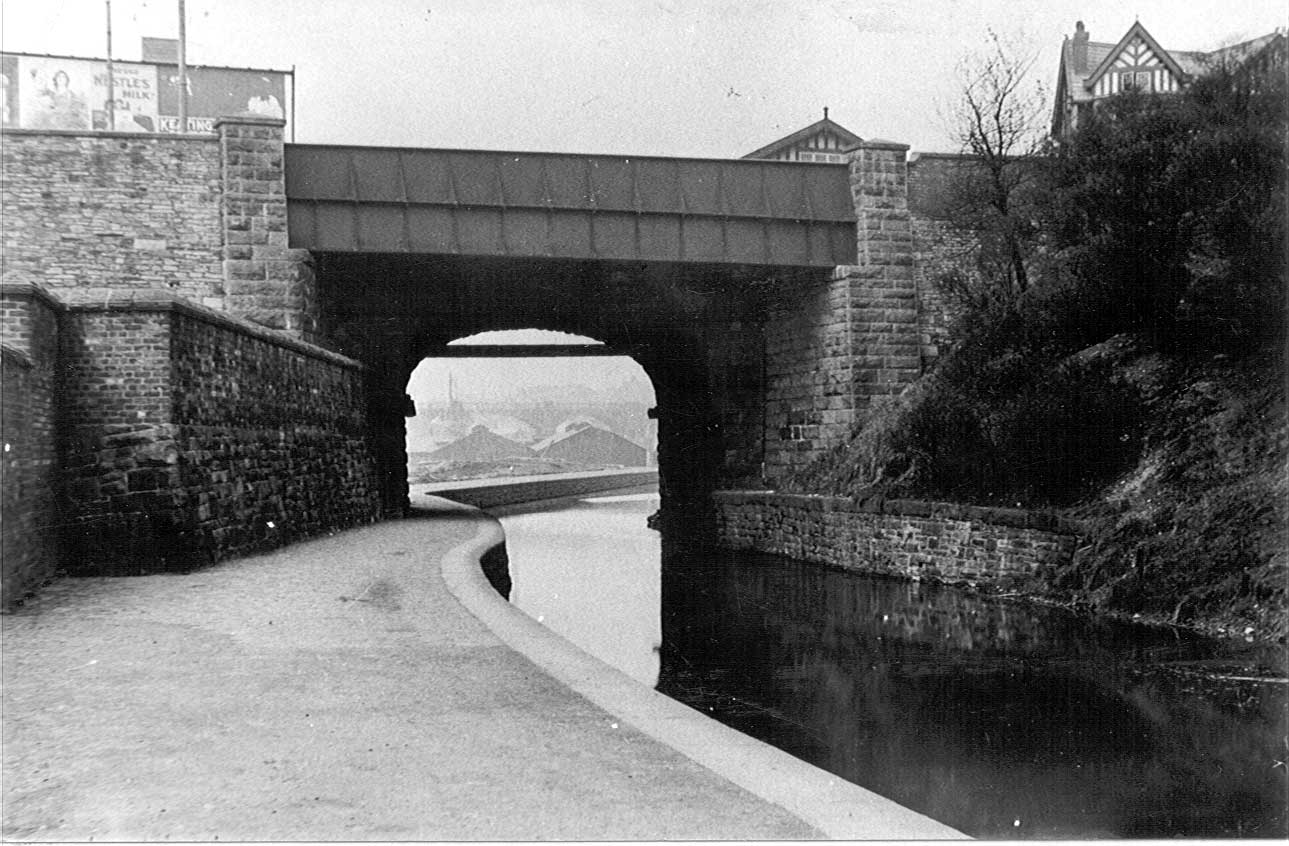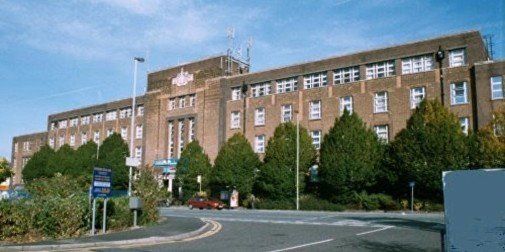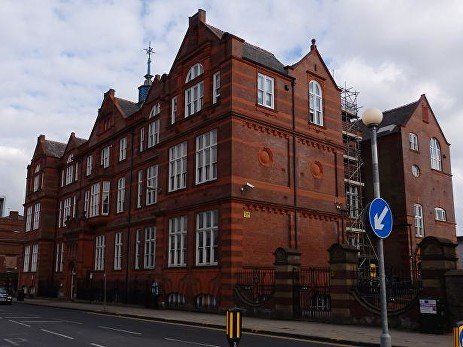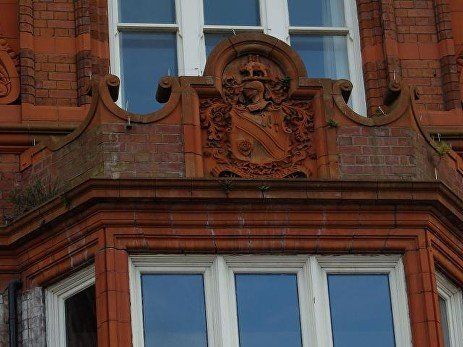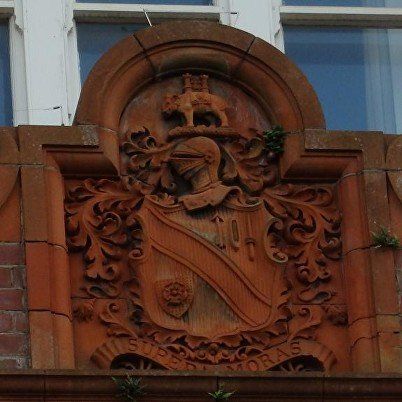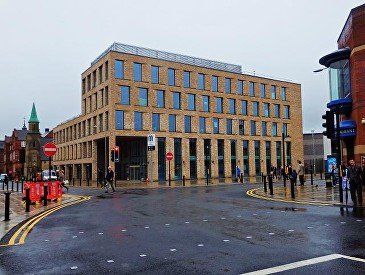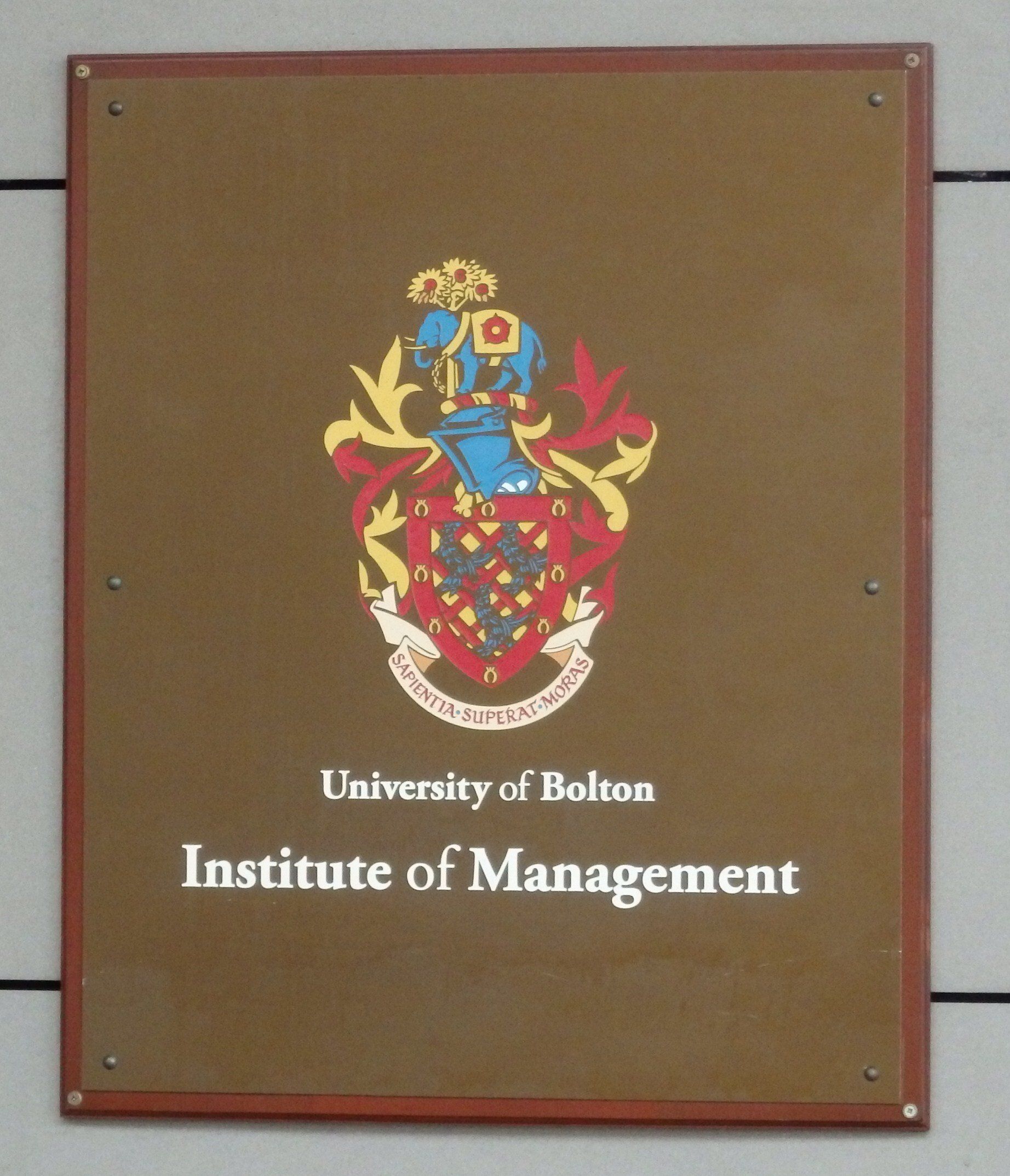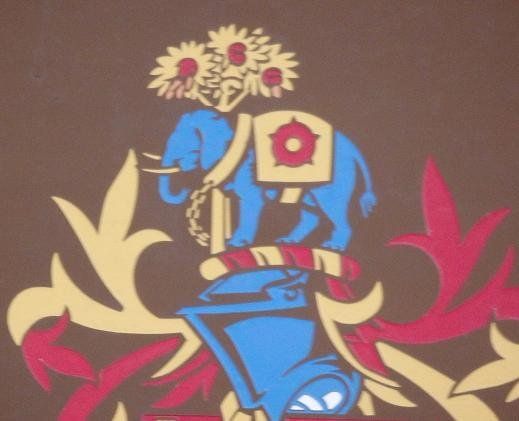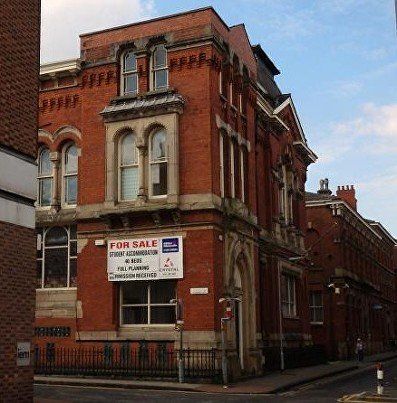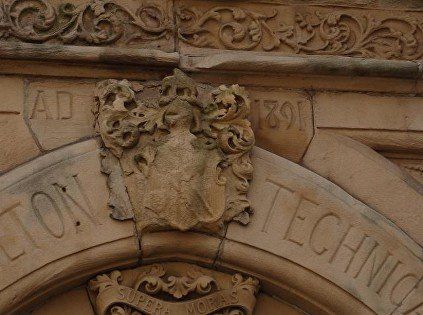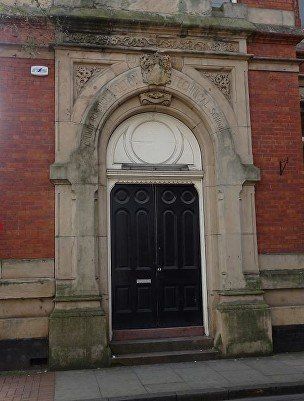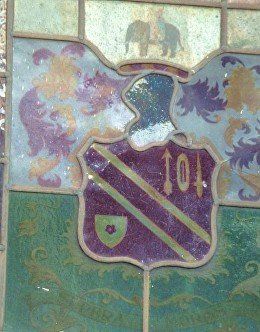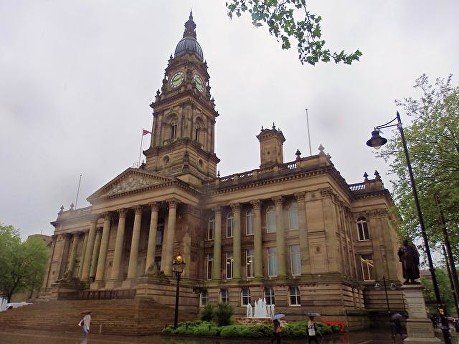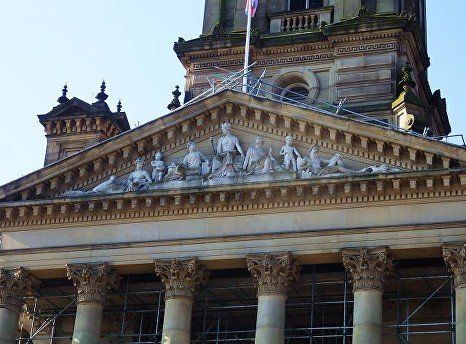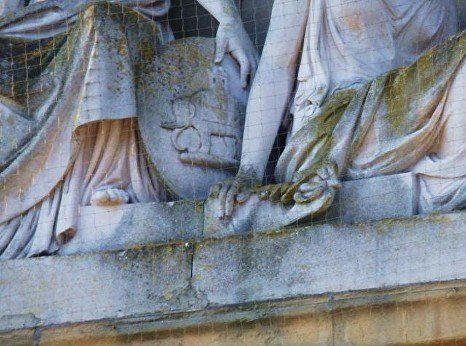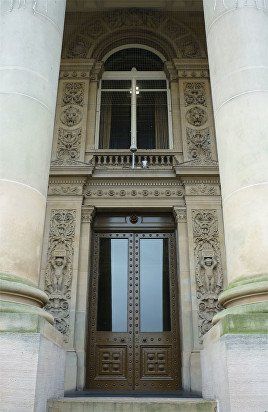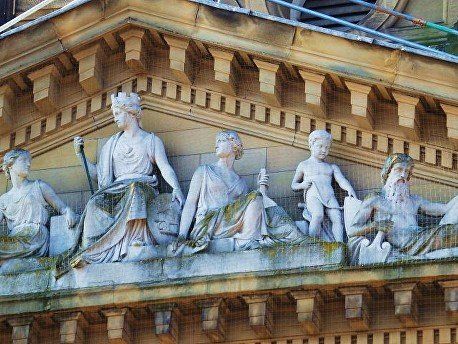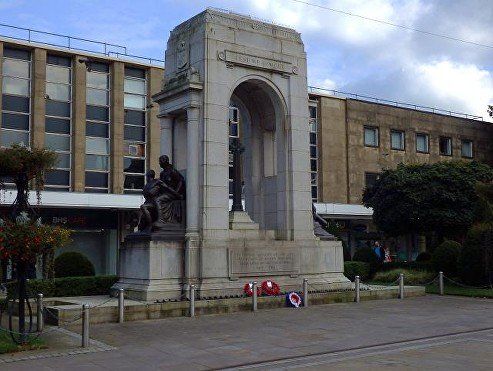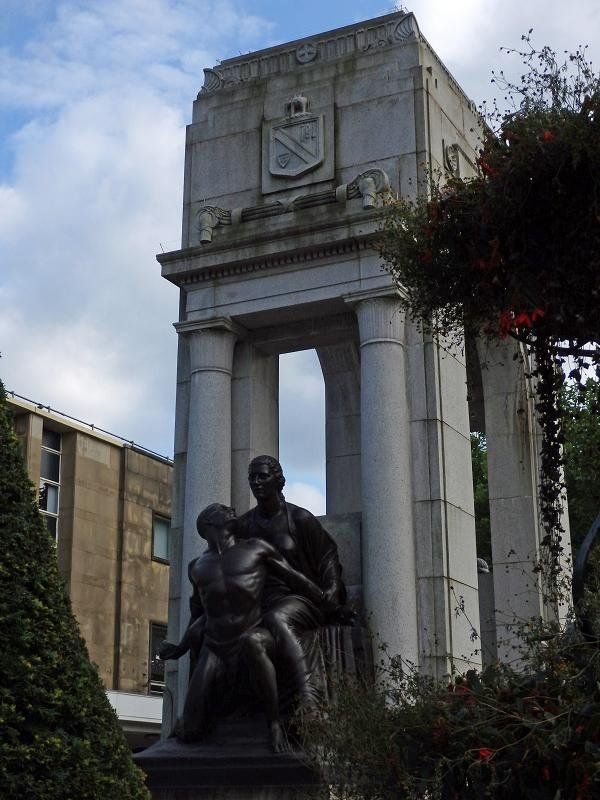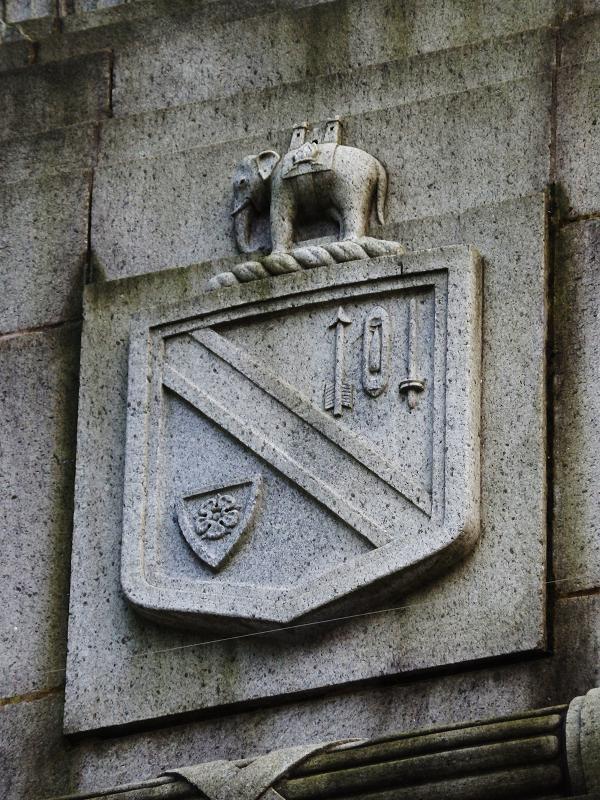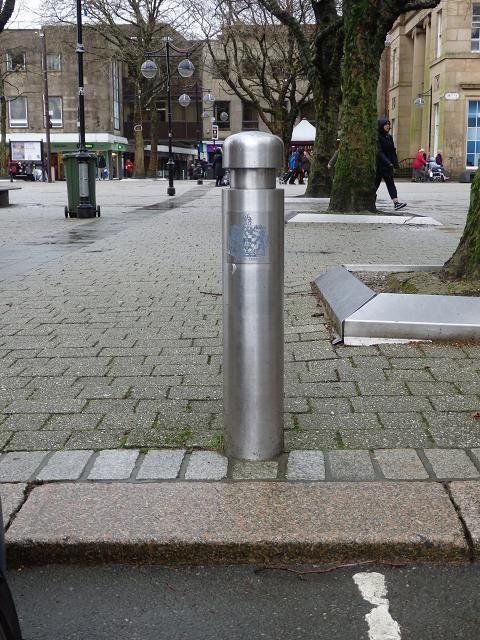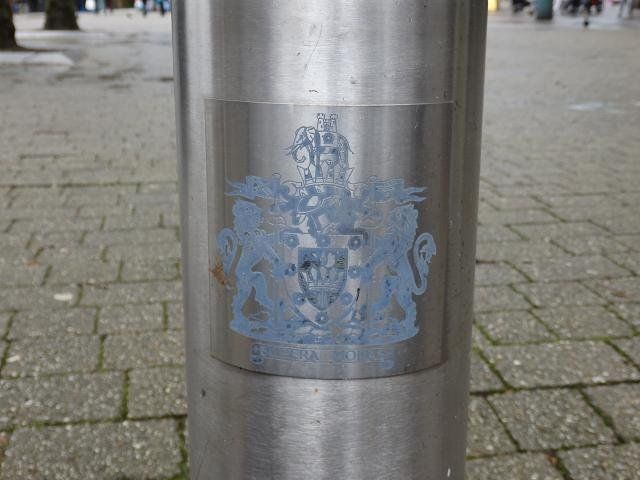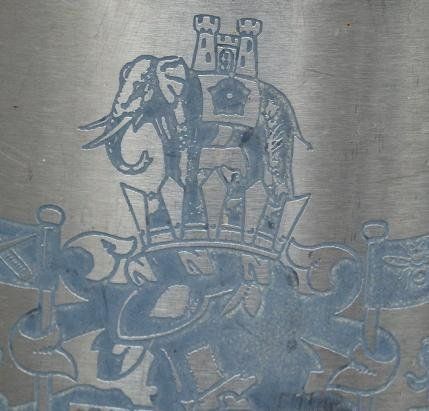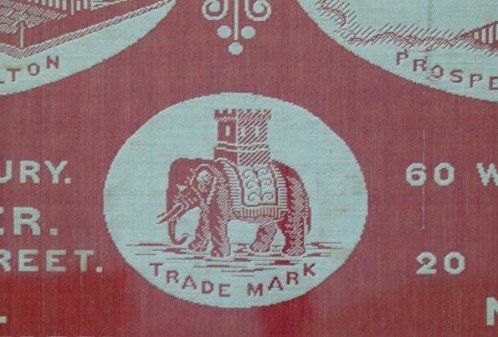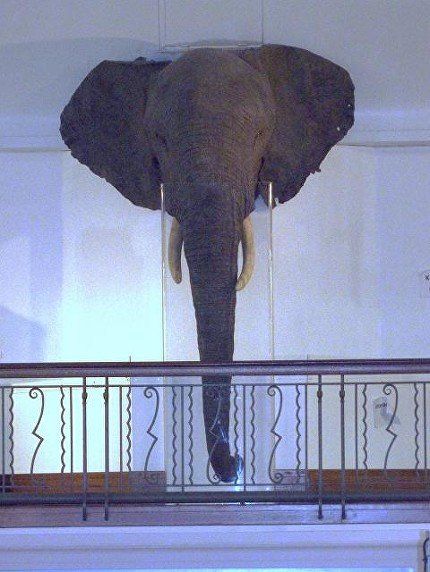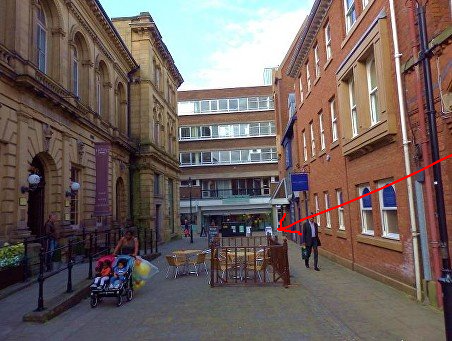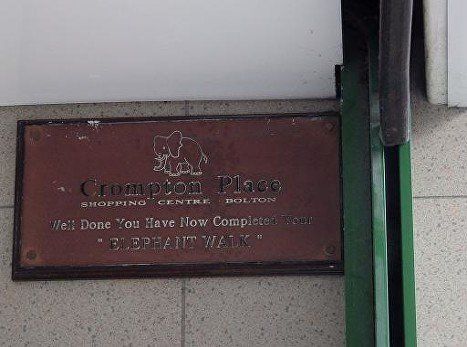There used to be 14 stumps around the market and bus station with elephants on top. There seems to be just one remaining, alongside the car park. (C)WDC February 2020
Market Street was not so named because it ran down to the Market Hall, but long before that because it ran up to the new market on the corner of the Town Hall Square.
Bolton Market Hall was designed by architect G. T. Robinson, and opened on 19 December 1855. Measuring 294 feet in length and covering an area of 7000 square yards it was said to be 'the largest covered market in the kingdom'. It cost £50000.
The square, roofed stalls that we remember were installed in 1938. The stalls were updated again around 1980(?)
It reopened as “The Market Place” in 1988.
(C)WDC September 2016
In 2015 a new elephant appeared in a window of the Market Hall on Corporation Street! I expected to be able to read the plaque from my photograph but that was not the case. When I went back to check some time later the elephant had disappeared. The elephant is called Milly. The plaque also refers to Sithami which is the name of an elephant at Chester Zoo (which died in September 2018).
Its purpose was fund raising and to commemorate the year 2000. Sculptor: Tamsin Burns
(C)WDC July 2015
So we progress along Deansgate to the Nat West Bank. Built about 1880 this was the Bolton Bank and it was only half the width. It is one of three buildings which were extended early in the 20th century and you simply can’t see the join. It has a coat of arms with a well-preserved elephant on the roof.
We detour at this point, down Bank Street and up Kay Street to its junction with St George’s Street where we find the statue of Atlas (from the Atlas Forge on Bridgeman Street) and the subway under St Peter’s Way whose walls are tiled with various motifs referring to the town, one of which is an elephant. The picture above shows members of the Council prior to the tunnel's official opening in 1988.
We return to the Preston's corner (as many people think of it). Our elephant walk does not take us into Churchgate but there was a fine elephant there in the early 20th Century.
The building at the left side of the picture had a remarkable ornate frontage and the frieze at roof level had an elephant in the centre. The wording says Derby Building (or builder)
The picture extends to Preston’s corner. The Umbrella shop is still next door so it dates between 1905 and 1909.
Probably an earlier picture c1890.
We now have the elephant near the top left. The wording on the frieze says Taylor Builder.
The present Golden Lion, recently reopened as the Churchgate, occupies the sites of James Booth and Golden Lion on this picture.
The original elephant walk would have taken us a little further along Bradshawgate then up Great Moor Street but we shall continue along Bradshawgate to see two elephants which no longer exist and one (well four actually) which arrived in 2021.
This is Bradshawgate with Shiffnall Street into the picture on the right. On the corner were the Bolton Council Transport Offices.
Facing Bradshawgate the building has six bays. I the stonework of the leftmost three are the words Bolton Corporation Transport Offices and this plaque on which of course we find our elephant.
Offices picture is from the collection of David Whenlock. Frieze detail is from Halliwell Local History Society.
The society has a terra-cotta elephant said to have come from this building (or possibly the tram sheds opposite) but there seems to be no evidence of its precise location.
Apologies AJC, I do not know who you are.
I you go down Shiffnall Street towards River Street (and the River Croal before St Peter's Way was constructed) you will find Saville Street on your right which has Glebe Street across its end which is where the viewer is standing. The building is an old mill which has been converted into apartments (and office space?) and renamed Toto House.
On its end is this magnificent, monumental, quite amazing piece of Urban Art which displays various aspects of Bolton.
Above: The background shows the forest of factory chimneys that you would see on any view of Bolton from the 1950s and earlier. Bolton's grand Town Hall plays a prominent role in the scene but you will also find rows and rows of typical terraced houses. There are two smoke blackened churches (Parish Church and Trinity Church? maybe two more) and is that a mosque?
The two main figures are representing cotton spinning and weaving. A smaller figure could be upholstering or working with leather.
The artists have their names in cast iron on the frame of the loom: Kelzo (Tony Brady) and Entise (Evan Barlow) These people also produced the "stamps" for the back of the ex GPO which we saw earlier.
Plenty of cogs at the bottom to remind us of Bolton's importance to heavy industry - but no direct reference to the part it played in railway history.
We also have flowers, gardens, park, green spaces.
AND WE HAVE ELEPHANTS.
Left: These are easier to see on the enlargement. We have a parade of three walking from the left down towards the Town Hall and another wandering aimlessly at the top right of this part picture.
Continuing along Bradshawgate we reach Trinity Street on the right and Bridgeman Place on the left. We turn left and go down to the lowest point where Bridgeman Place and Lower Bridgeman Street join and become Bradford Street (picture 1). ((It is shorter to go down to River Street and along to Bridgeman Place))
Here was a pair of bridges, one over the River Croal (picture 2) and the other over the Bolton, Bury and Manchester canal (picture 3). It is a pity that these two pictures don't quite join up, they both show part of the same advertisement hoarding. We are looking upstream from the Haulgh towards the Parish Church. Springfields paper works is immediately behind us where the Trinity Retail area is now (Kids R Us and Staples until they closed down). When these bridges were built (perhaps rebuilt) in 1902 they had a plaque (or two, or four?) as did other bridges we have already seen. When St Peter's Way was built all evidence of the canal disappeared and the Croal was culverted. The bridges were replaced with a single modern structure. But one plaque was preserved and has now been placed at the side of steps (picture 4) leading down to Trinity Retail. quite close to the left side of the pair of bridge pictures. And on the plaque (picture 5), surprise, surprise is our next elephant.
We now return to the Trinity Street / Bradshawgate junction.
We make our way up Great Moor Street to find Bolton County Grammar School, previously the Municipal School and before that Bolton Higher Grade School – but frequently called “The Elephant School”. Look at the main door, and above and to the right is an oriel window - above which is our next elephant which sadly seems to have lost its trunk.
On the Bold Street side of this building is a leaded window with a stained glass coat of arms. You may notice that the coat of arms is the wrong way round and the elephant is facing the wrong way. This is of course because the stained glass is intended to be seen from the inside of the building when also the colours would be brighter. Picture four has flipped it round. (C)WDC March 2020. Click and navigate. for larger images.
Further up Bold Street is a new building, The Bolton Hub, which houses eleven community and voluntary organisations including Bolton CVS (Community and Voluntary Services) which has adopted the elephant (in triplicate) as its logo - though it is not quite strictly a traditional Bolton elephant. (C)WDC March 20202
From there we go onto Newport Street and along to the Town Hall Square where we see more elephants.
The interior of Bolton's Town Hall is home to a plethora of pachyderms but viewing from the outside we must be content with merely two, one in the tympanum, the figures in the pediment almost invisible unless you know where to take a very careful look and the other at the very top of the front door which is even more difficult to see.
Apparently a number of other elephants were included in the original drawings for the exterior of the building but were struck out at the design stage.
We note that this elephant has a single turret.
(C)WDC March 2020
More notes at the foot of this page.
This picture is of the main front door of the Town Hall. The second elephant is at the very top of the arch over the window. The pictures below zoom into the elephant. Click and navigate for larger images. (C)WDC 9 September 2021
In the Egyptology gallery we have an invitation to a Dinner held to mark the visit to Bolton of the King of Egypt.
There is also a commemorative fabric woven by and for the firm of Barlow and Jones, Spinners and Manufacturers for the Jubilee Exhibition of 1887. It is a Manchester firm but four of the five pictures are of Bolton mills and as a trade mark they have a slightly sad looking elephant.
We leave the museum and make our way down Exchange Street to that entrance to the Crompton Centre. We look at that entrance from Acresfield. There is an elephant there which is very hard to find. We need to look at the top right corner. (C)WDC September 2016
There have been a number of elephant walks over the years. It seems that this was the final elephant for one of them. It is also the last one on our walk round town.
Well Done for completing the elephant walk
There are other elephants, old and new in Bolton and many that used to exist but have long disappeared. There seems to have been something of an upsurge of use by local clubs and societies in recent years. You can see some of these elephants which could not be included in our route on the next page.
More notes on the tympanum above the front entrance of the Town Hall
The tympanum was commissioned from the Scottish sculptor William Calder Marshall (1813-1894), best known for his contribution to the Albert Memorial in London. His own contemporary description of the work is as follows:
The central figure represents Bolton with a mural crown and holding a shield on which is emblazoned the borough arms. The figures to the right and left of the principal figure represent "Manufactures" and "Commerce"; the former holds a distaff and leans upon a bale of goods, whilst near her are a cylinder and a wheel, symbolic of machinery; a negro boy (sic) bears a basket of cotton and "Earth" in the corner pours her gifts from a cornucopia. On the left of the principle figure is "Commerce" holding the caduceus and a helm; a boy holds a boat by the bow, and in the angle is "Ocean", typical of the wide extent over which the manufactures of the town have spread. The figures are of Portland Stone and upon a scale of eight feet if standing.
A mural crown - it looks like a castellated or battlemented wall which presumably represents the ton of Bolton.
The shield is under her left hand and the "borough arms" are the ELEPHANT which is our focus of interest.
To the right and left means on the central figure's right and left and is left and right as we view things.
Distaff - a rod upon which cotton is held as it is being spun. I cannot see this held by Manufacture. Is the distaff actually in Bolton's right hand? Dis derives from Old Norse for the bunch of flax fastened to this staff.
The wheel is a cog wheel which would be seen more clearly by a viewer further to the left.
.
Earth is the recumbent figure to the left. The cornucopia is not easily seen but the fruits of the earth can be made out.
Did you notice the sheep?
caduceus is the stick with one or two snakes entwined around it and often with wings at the top carried by Mercury or Hermes, the messenger of the gods. I cannot see this and I presume the item in the left hand of Commerce is the helm or rudder. There are a number of caducei at either side of the main door. I begin to wonder if the sculptor's description was based on an early stage of the design and not on the finished work.
The male figure is Ocean.
